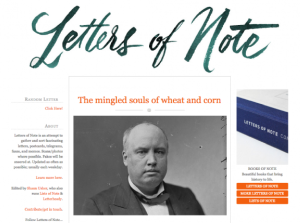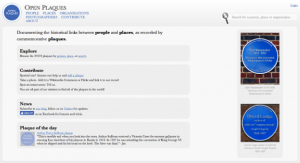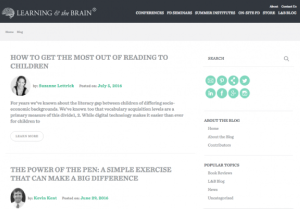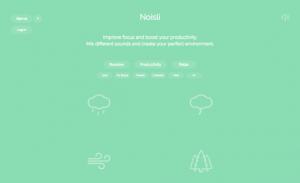General Interest
Back to Top
|
 |
|
 |
|
The Story of the Beautiful: The Peacock Room
|
Arts |
|
The Story of the Beautiful is an interactive website dedicated to a single room with a contentious history. Between 1876 and1877, artist James McNeill Whistler took charge of decorating a London dining room for ship owner Frederick Richards Leyland. Whistler took the lead from ailing architect Thomas Jeckyll, who had designed ornate shelving units to display Leyland's collection of Chinese porcelain jugs. Unbeknownst to Leyland, Whistler drastically revised the room, adding floor to ceiling peacock patterns; Leyland was not pleased. So Whistler added one final touch to the room: a mural of two squabbling peacocks entitled "Art and Money." Leyland hated the Peacock Room, but he kept the room intact and showed it off to visitors. In 1903, American art collector Charles Lang Freer purchased the Peacock Room and had it reassembled in his Detroit home. Leyland's porcelain collection was not included in the sale, so Freer collected his own ceramics to fill Jekyll's shelves, including pieces from Syria, Iran, Japan, China, and Korea. On this website, viewers can take a virtual tour of both the London and Detroit renditions of the Peacock Room, examine over 400 individual ceramic items featured in the room, and view other archival material related to this spectacular room. Note that to view the virtual tours on the site, visitors need to use Google Chrome or have the most updated version of Adobe Flash. [MMB] |
|





|
|
 |
|
Undark
|
Science |
|
"Undark" is what the U.S. Radium Corporation named the glow-in-the-dark - and radioactive - paint it produced for use on watches between 1917 and 1938. Hailed as a great innovation at the time, the paint tragically led to the premature deaths of many young, female factory workers, known today as the "radium girls." Undark, an online publication launched by the Knight Science Journalism Program at MIT this past spring, is dedicated to producing investigative journalism related to science. The editors write, "We appropriate the name ["undark"] as a signal to readers that our magazine will explore science not just as a 'gee-whiz' phenomenon, but as a frequently wondrous, sometimes contentious, and occasionally troubling byproduct of human culture." Edited and published by a team of prominent science writers, including Deborah Blum and Tom Zeller, Undark includes long-form investigative journalism, shorter articles, op-eds, documentaries, and news round-ups. The site has also produces a podcast, Colloquia, which accompanies longer investigative pieces. This online magazine is an especially useful source for those looking to better understand ethical debates in the scientific community. [MMB] |
|





|
|
 |
|
Letters of Note
|
Social studies |
|
Shaun Usher launched Letters of Note in 2009 in order to highlight a variety of historic letters. The site has become so popular, especially in Usher's home of Great Britain, that he has since published two books compiling many of these letters. However, these books did not mark the end of his project, and Usher continues to post new letters to this site. Users can browse through an archive of over 900 letters that range from poignant to amusing. For instance, Usher recently posted Charlotte Bronte's eloquent and heartbreaking letter to her publisher regarding the death of her sister Emily ("Well, the loss is ours, not hers, and some sad comfort I take"), as well Winston Churchill's sardonic reply to a duke (under the nom de plum "Scorpio") who requested that Britons pray for rain to end a 1919 drought. Letters of Note makes for fascinating reading, and historians and teachers will also find this site to be a rich source for primary documents. [MMB] |
|





|
|
 |
|
Shelf Awareness
|
Language Arts |
|
Shelf Awareness publishes two regular newsletters: one, Shelf Awareness Pro is a daily publication designed for publishers and librarians; the other, Shelf Awareness for Readers, is a twice-weekly publication for book fans of all stripes. Both publications are written and edited by a team that includes experienced publishers, booksellers, librarians, and book critics. While Shelf Awareness Pro includes job postings and news about bookstores and publishers, Shelf Awareness for Readers provides book fans with brief reviews of 25 recently published books each week. In addition to book reviews, the site includes interviews with reviewed authors and a Great Reads section highlights a previously published book, often one that may be of interest to readers because of its link to current events. The Book Candy feature, meanwhile, links to fun websites and resources about books and readers from around the internet. Interested readers can subscribe to both publications for free, or read current and past issues on the website. [MMB] |
|





|
|
 |
|
Backchannel
|
Social studies |
|
Backchannel is dedicated to "mining the tech world for lively and meaningful tales and analysis." Since 2014, this magazine - authored by a team of tech experts and journalists - has provided readers with news about technological developments, product evaluations, and tech-industry news. Backchannel pays special attention to the business end of the tech industry, covering new start-up tech companies. While directed toward an audience of tech-enthusiasts, its authors excel at examining and reflecting on the ways in which technology continues to shape society at large in an engaging, jargon-free manner. As a result, even tech-shy readers may find articles of interest here. For example, Rex Sorgatz recently penned an engrossing article about visiting his hometown of Napoleon, North Dakota - population 792 - to examine how social media and technology have changed the experience of growing up in isolated, rural towns. Readers may also want to check out Jessi Hempel's recent article about six women who played key roles in the history of the Silicon Valley. [MMB] |
|





|
|
 |
|
Open Plaques
|
Social studies |
|
Open Plaques is an open-sourced project that documents and records the location of historic plaques around the world. Based out of Great Britain, Open Plaques has received support from the RSA (Royal Society for the Encouragement of Arts, Manufactures, and Commerce). Anyone can submit a plaque for inclusion in this project, which currently features over 35,000 plaques worldwide. Users can browse or search for plaques by place, by the individual honored by the plaque, or by the organization that placed the plaque. Twitter users can follow @openplaques to both view recently added plaques and to explore how individuals have used Open Plaques to gain insight into history and how societies memorialize the past. For example, Steve Peters has created an infographic using sizing circles to represent the most popular subjects and individuals featured in U.K. plaques. Peters' infographic reveals that "knight" and, interestingly, "bachelor" top the subject list. John Wesley, meanwhile, edges out Charles Dickens for the honor of being featured on the most U.K. plaques featured in this project. [MMB] |
|





|
|























